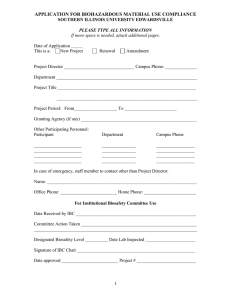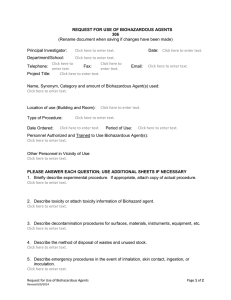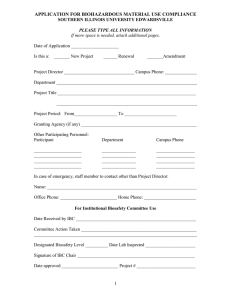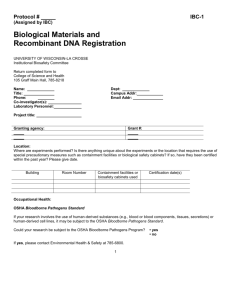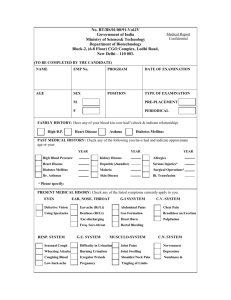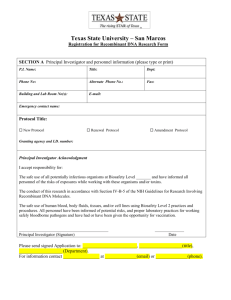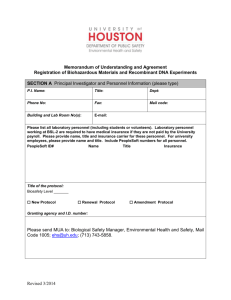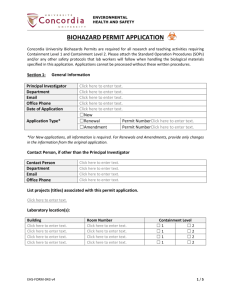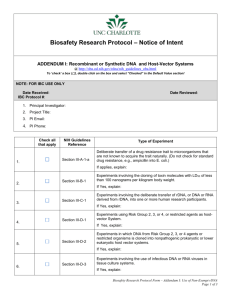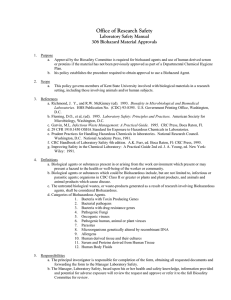Application form - Faculty of Health Sciences
advertisement
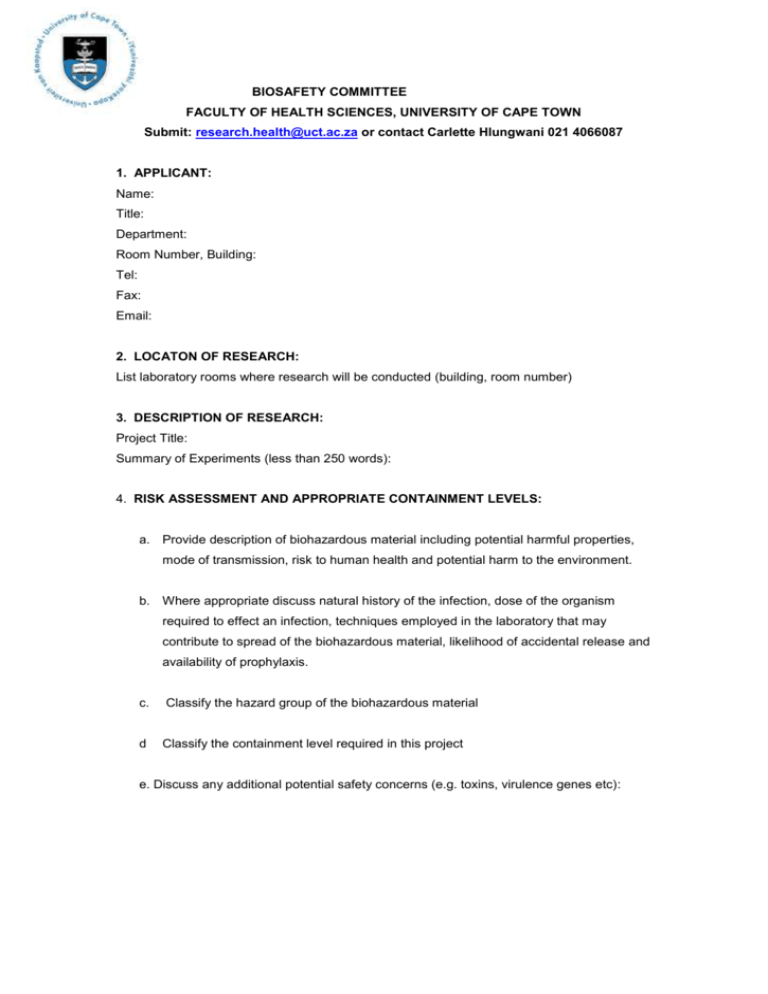
BIOSAFETY COMMITTEE FACULTY OF HEALTH SCIENCES, UNIVERSITY OF CAPE TOWN Submit: research.health@uct.ac.za or contact Carlette Hlungwani 021 4066087 1. APPLICANT: Name: Title: Department: Room Number, Building: Tel: Fax: Email: 2. LOCATON OF RESEARCH: List laboratory rooms where research will be conducted (building, room number) 3. DESCRIPTION OF RESEARCH: Project Title: Summary of Experiments (less than 250 words): 4. RISK ASSESSMENT AND APPROPRIATE CONTAINMENT LEVELS: a. Provide description of biohazardous material including potential harmful properties, mode of transmission, risk to human health and potential harm to the environment. b. Where appropriate discuss natural history of the infection, dose of the organism required to effect an infection, techniques employed in the laboratory that may contribute to spread of the biohazardous material, likelihood of accidental release and availability of prophylaxis. c. Classify the hazard group of the biohazardous material d Classify the containment level required in this project e. Discuss any additional potential safety concerns (e.g. toxins, virulence genes etc): 5. PROCEDURES: Description of the procedures involved with the normal handling of the biohazardous material including information on storage and disposal. Where appropriate refer to guidelines, standard operating procedures or guidelines from the University, or recognised National Agencies or International Agencies. Answer yes/no: - Will these experiments involve transfer of rDNA, DNA or RNA derived from rDNA into whole animals or whole plants? - Deliberate transfer of rDNA or DNA or RNA derived from rDNA, into humans - Experiments using human or animal pathogens (biosafety 2 and higher) as hostvector systems - Cloning of DNA from human or animal pathogens (biosafety level 2 and higher) into non-pathogen host vector system - Genes for toxins lethal for vertebrates - Release of genetically engineered organisms to the environment - Cultures of more than 10 litres - Experiments involving whole animals: experiments where the animal’s genome has been altered (transgenic animals) and experiments involving viable rDNA-modified microorganisms tested on whole animals (where minimum requirement is BL2 and higher). 6. DECLARATION All of the information furnished above is true and accurate, to the best of my knowledge and belief Signature: _______________________ Staff No. _______________________ Date: _________________

